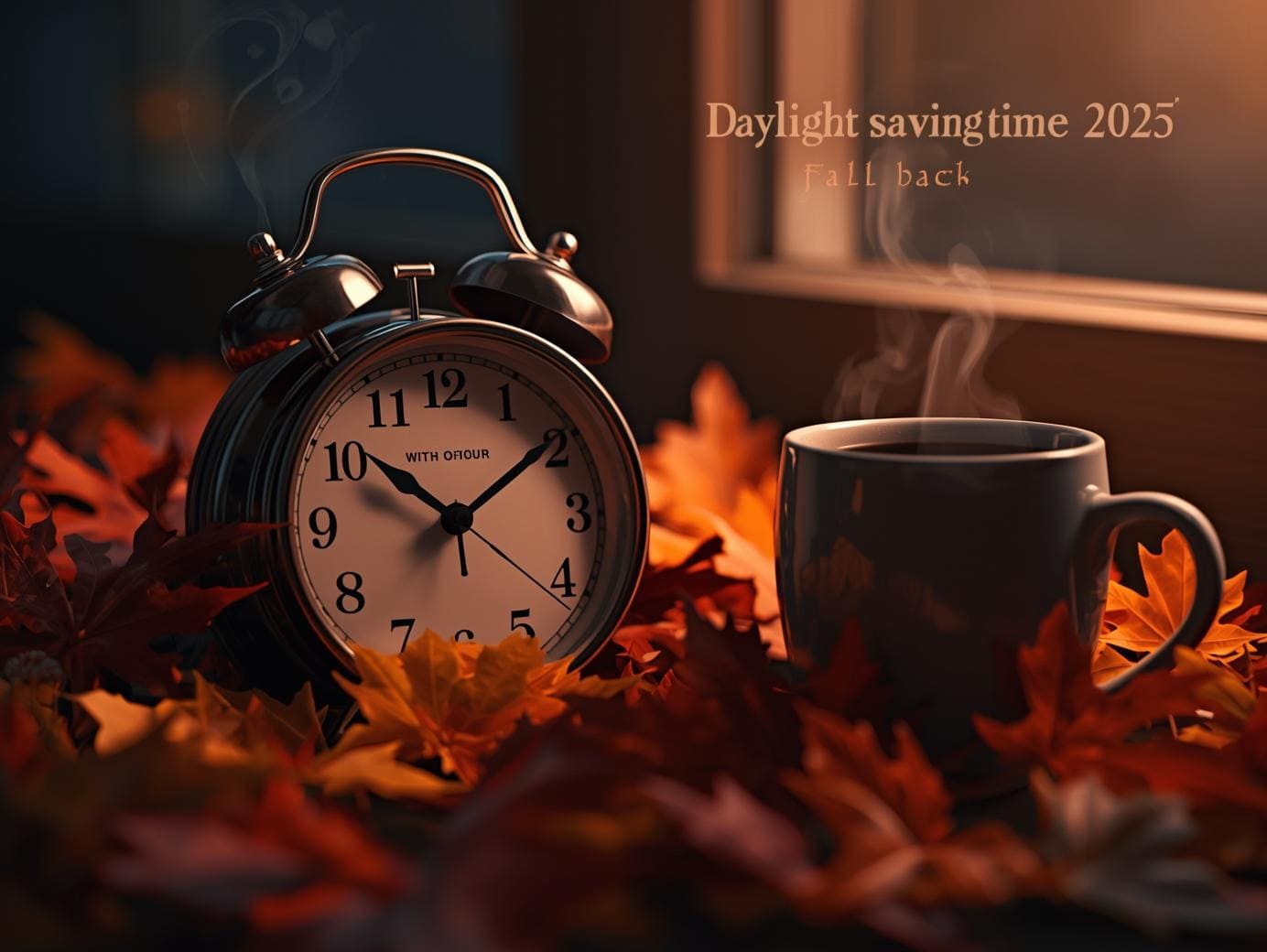🗓️ When Does Daylight Saving Time End in 2025?
In the United States, Daylight Saving Time (DST) ends on Sunday, November 2, 2025, at 2:00 a.m. local time.
At that moment, the clocks will “fall back” one hour — meaning 2:00 a.m. becomes 1:00 a.m.
So yes, you’ll get an extra hour of sleep that night.
After the time change, mornings will be lighter, evenings will get darker earlier, and sunset will arrive an hour sooner than before.
🌞 Why Do We Have Daylight Saving Time?
The main purpose of DST is to make better use of natural daylight during the longer days of spring and summer.
Here’s a quick timeline of how it began:
1918: DST was first introduced in the U.S. during World War I to save fuel and energy.
1966: The Uniform Time Act established a consistent start and end date for DST.
2007: Congress extended DST by four weeks, moving the start to the second Sunday in March and the end to the first Sunday in November.
Today, almost all U.S. states observe DST — except Hawaii and most of Arizona, which remain on standard time year-round.
⏰ Do We Gain or Lose an Hour in November 2025?
When clocks fall back in November, we actually gain one hour.
If you go to bed at 10:00 p.m. Saturday night, you’ll technically experience 10:00 p.m. twice, giving you a little bonus rest.
In contrast, when we “spring forward” in March, we lose an hour — that’s why this November shift feels so much easier.
🧠 How Daylight Saving Time Affects Your Body and Health
Changing your clock by just one hour may seem minor, but it can impact your body’s internal clock (circadian rhythm).
Even gaining an hour can throw off your routine for a few days. Common effects include:
Feeling sleepy earlier in the evening
Waking up too early
Mild mood swings or tiredness
Temporary changes in appetite or focus
According to sleep experts, the key is gradual adjustment. Here’s how to make the transition smoother 👇
💤 Expert Tips to Adjust to the Time Change Easily
- Shift your bedtime gradually.
Start adjusting your schedule 2–3 days before the time change by going to bed 15 minutes later each night. - Get morning sunlight.
Natural light exposure after waking helps your body reset its internal rhythm faster. - Stick to your sleep routine.
Try to keep a consistent bedtime and wake-up time, even over the weekend. - Avoid caffeine after 2 p.m.
This helps you fall asleep at your new adjusted bedtime. - Use the extra hour wisely.
Instead of staying up late, catch up on rest or enjoy a slow Sunday morning. - Help your kids adjust too.
Children can be more sensitive to time changes, so keep their bedtime calm and consistent.
🌎 Which U.S. States Don’t Observe DST?
Hawaii
Most of Arizona (except the Navajo Nation)
U.S. territories such as Puerto Rico, Guam, and the U.S. Virgin Islands
These regions stay on standard time all year long, avoiding the biannual clock change.
📆 Key Dates for Daylight Saving Time 2025
Event Date Time
DST Begins Sunday, March 9, 2025 2:00 a.m. (clocks move forward 1 hour)
DST Ends Sunday, November 2, 2025 2:00 a.m. (clocks move back 1 hour)
💡 Fun Fact: Why 2:00 a.m.?
The U.S. chose 2 a.m. for clock changes because it’s late enough to minimize disruption — most people are asleep, and few schedules are affected. It also ensures the new day’s date doesn’t change mid-shift for bars, restaurants, and airlines.


Leave a Reply